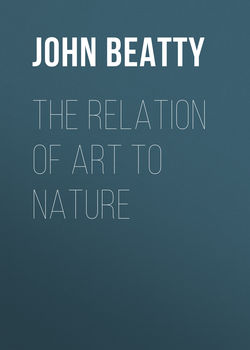Читать книгу The Relation of Art to Nature - John Beatty - Страница 5
Ancient Conceptions of Art
ОглавлениеClosely allied to the thought that the painter creates beauty is the ancient tradition that the artist is inspired to produce works of art. This conviction had its origin very early in the history of art. In the time of Praxiteles this belief was entertained by many; it was thought, for instance, that in the production of the Aphrodite of Knidos the sculptor was inspired by the goddess herself.
This conception of art doubtless grew out of the fact that the early art of the Egyptians and Greeks was largely devoted to the representation of deities and to the erection of temples which should be their shrines. This association of art with the gods and their temples doubtless contributed to the belief that the artist was inspired or that he possessed a superior power or the gift of inspiration.
Hegel
Closely allied with this thought was the conception expressed by Hegel with reference to a distinction between the external and material forms of art and the spirit which he suggests permeates the work and of which it is a manifestation. Hegel, although accepting the theory that “art has the vocation of revealing the truth in the form of sensuous artistic shape,” speaks of the union of the material with the spiritual in a manner, which although quite true in abstract reasoning, contributes to this impression. Discussing Architecture as a Fine Art, he wrote: “The material of architecture is matter itself in its immediate externality as a heavy mass subject to mechanical laws, and its forms remain the forms of inorganic nature, but are merely arranged and ordered in accordance with the abstract rules of the understanding, the rules of symmetry. But in such material and in such forms the ideal as concrete spirituality cannot be realized; the reality which is represented in them remains, therefore, alien to the spiritual idea, as something external which it has not penetrated or with which it has but a remote and abstract relation… Into this temple now enters the God himself. The lightning-flash of individuality strikes the inert mass, permeates it, and a form no longer merely symmetrical, but infinite and spiritual, concentrates and molds its adequate bodily shape.” No one today in the presence of a superb relic of architecture asks whether or not it is the abiding place of a spirit. It is accepted as expressing the spirit of beauty and is enjoyed for this alone.
Hegel’s conception of a work of art, frequently expressed in his philosophy, was that the content or idea is the important thing. This conception conformed to early art because painting and sculpture were employed primarily to express ideas.
With the development of the Landscape School of Art and the enjoyment of art on the purely aesthetic side, modern thought has materially changed. Gradually our appreciation of the beautiful for its own sake has developed. The influence of this movement has reacted upon all phases of art expression, and even those works which express ideas in the sense of subject matter have come to be judged upon the basis of aesthetic beauty, rather than with reference to the idea or content as thus defined.
Therefore what Hegel says applies to the early conception of art rather than to that of the present time.
Socrates
Another conception of art suggests the union of the beautiful with the good. The philosophy of Socrates teaches this. He regarded the beautiful as coincident with the good, and both of them as resolvable into the useful. He does not seem to have attached importance to the immediate gratification which a beautiful object affords to perception and contemplation, but rather to have emphasized its power of furthering the more necessary ends of life.
These early theories and conceptions with reference to art may in some degree account for the prevalence of an impression, even in our own time, that the artist is inspired or that he creates his masterpiece as the result of some supernatural power. It has always seemed to the inexperienced that the creation of a work of art implies an element of mystery or represents something inexplicable. What is to the painter a natural process becomes mysterious. Nothing existed on the blank canvas and behold, presently, there appears a picture simulating life. Having no knowledge of the methods employed, or of the years of patient labor required to secure the technical ability to represent the actual truth and spirit of natural objects, the result seems far removed from the ordinary. Thence it is but a step to the point of view that the artist is one “inspired.”
